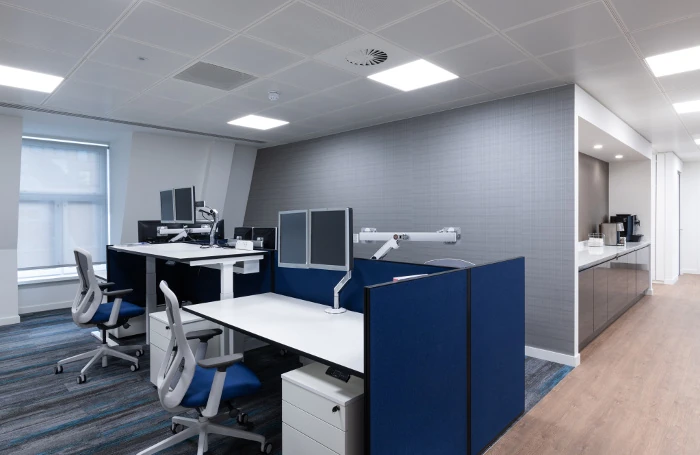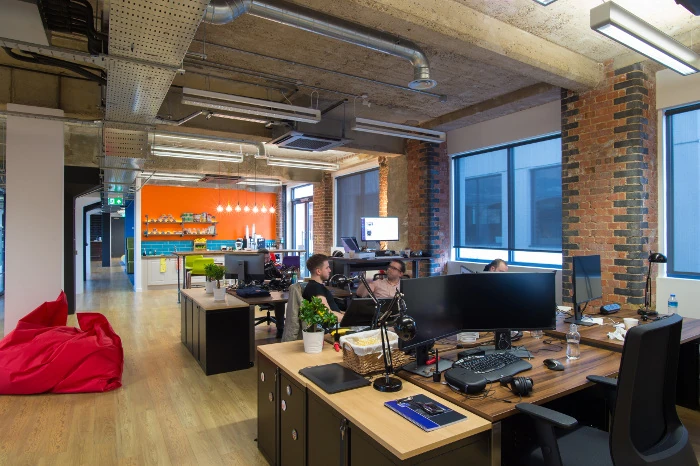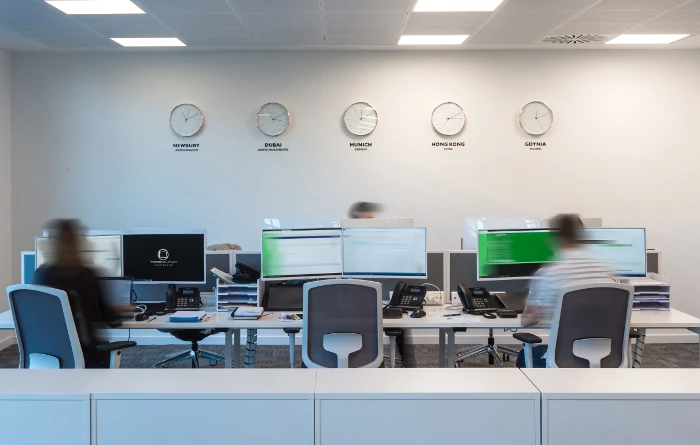The Dos and Don'ts of Ergonomic Office Design
12/03/19< Back to news index

Ergonomics is the study of how to adapt a workplace to reduce the probability of causing injury or illness to the workers.
Investing in an ergonomically-designed office has been proven to both improve productivity and increase profits. Over 31 million working days were lost in the UK in 2016-2017 due to work-related health problems and 8.9 million of these were cases of musculo-skeletal problems. Physically fit workers are happier, so they are also in better mental condition. This makes staff more productive in any job, and significantly reduces absences.
The main types of workplace injuries include repetitive stress (RSI), repetitive motion (RMI), and musculo-skeletal disorders (MSD). In the office, the main causes are awkward posture, sitting in the same position and repeating the same motions for a long time.
A hazard is anything that can cause harm; risk is the chance that any hazard will actually do so. We can't remove all possible hazards from a workplace but there are many ways to reduce risk. This is why ergonomic office design is so important.
Some simple dos and don'ts for ergonomic office design:
DO

- Train all staff about ergonomics; it's in everyone's interests. Appoint someone they can report to if a work-related health problem may be developing. Well-informed staff can watch out for hazards, tell you what needs improvement, and adapt their own behaviour to set a good example. This is just one idea:
Habits can be changed. When working at a computer, re-focus your eyes regularly. Briefly looking further away every ten minutes or so can help prevent eyesight problems developing. - Invest in office chairs with adjustable backrests that follow the natural curve of the spine and have them properly adjusted. We are all different shapes and sizes; age, gender and medical history are also relevant. Office staff should sit with back straight, feet flat on the floor, weight distributed evenly on both legs and knees at a right angle. Armrests should be adjusted to height of desk. The back of the chair should have a slight incline of 100-110°.
- Desks should enable staff to sit comfortably. Computers should be positioned so that hands and forearms are in a straight line, in a relaxed position with the screen at eye-level or slightly higher.
- Keep up-to-date with new developments.
DON'T

- Expect people to sit still too long. They need to get up and stretch their legs sometimes. It is good for circulation, which affects all aspects of health. In the long-term, they will be less susceptible to problems such as fatigue and repetitive stress.
- Ignore complaints. Someone with painful wrists now could later develop a serious condition such as Carpal Tunnel syndrome and need a lot of time off work.
- Many problems are musculo-skeletal, but don't forget to adapt workstations to protect eyesight and general health too.
- Forget that even the best designed offices are improved by correct use.
Get in touch if you want further information on ergonomic office design and how we can help you to improve your employee's health, well-being and focus.